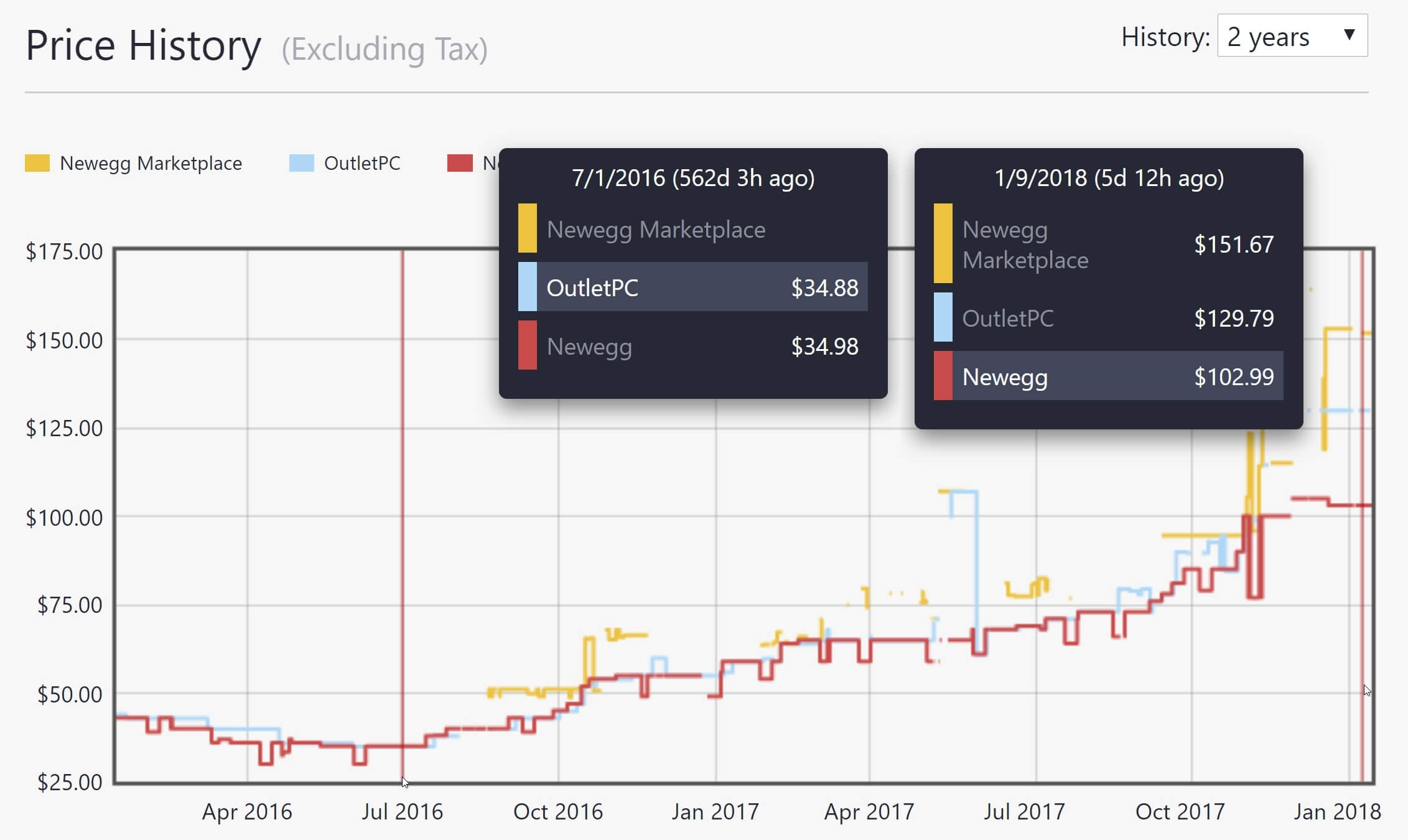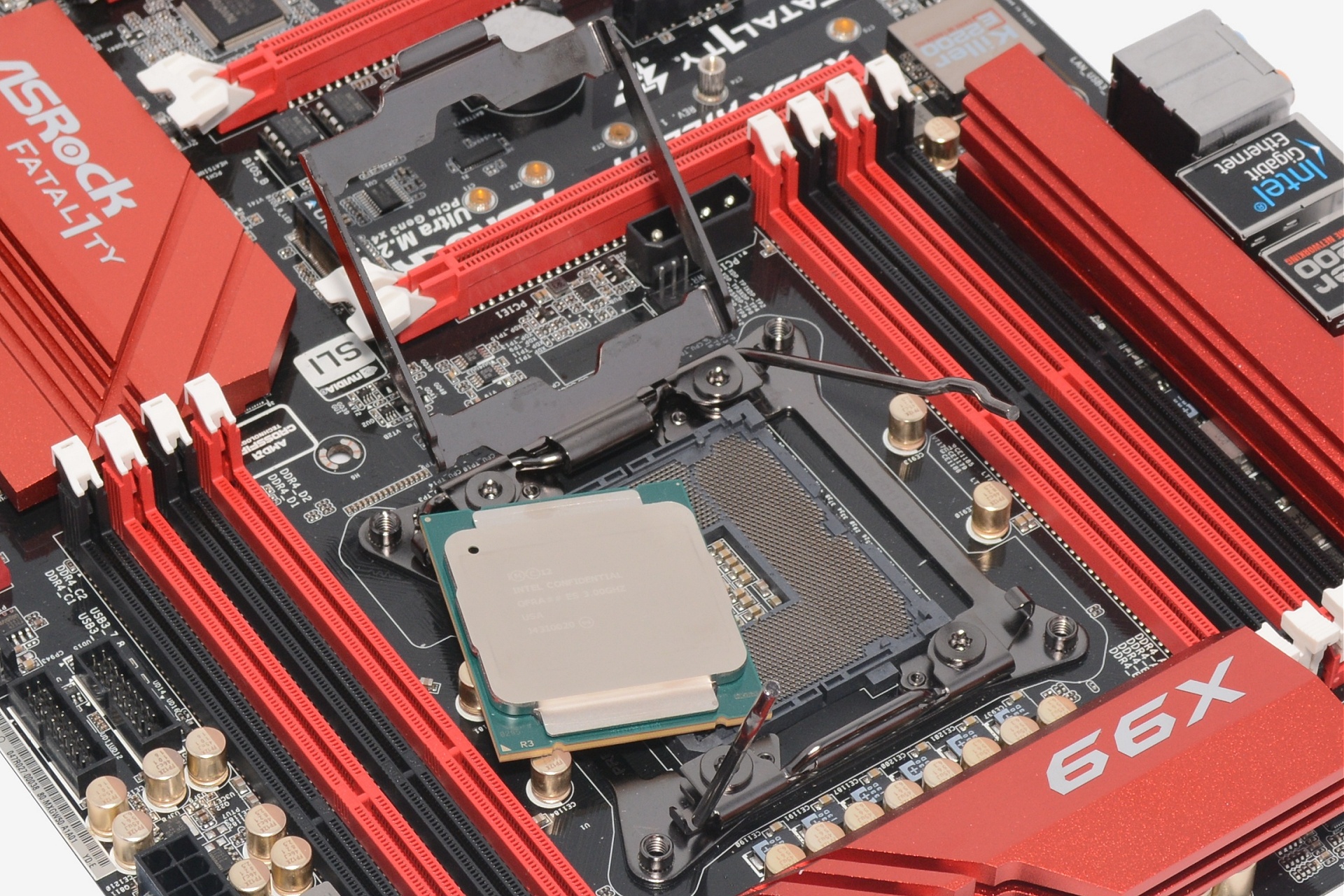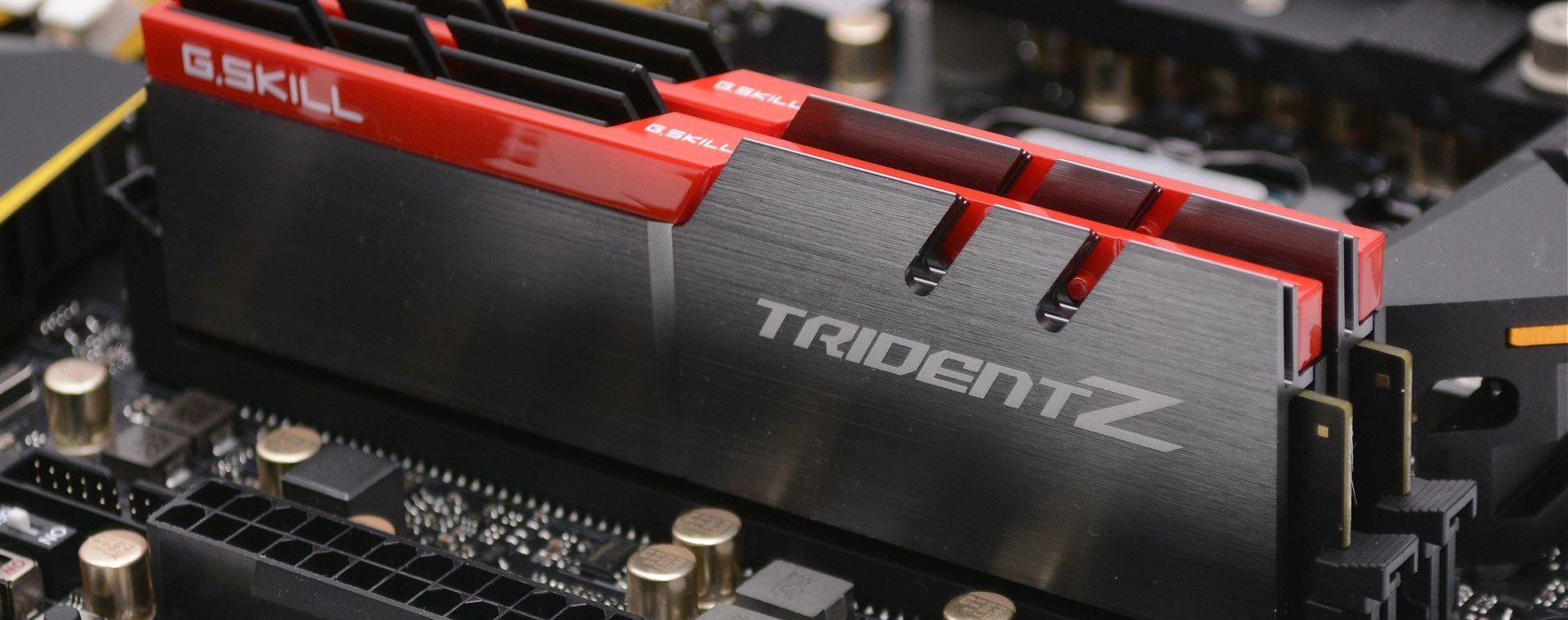The Watch Different Rooms Between Two Women Onlinepast twelve months turned out to be some of the most exciting times we can remember for building a new computer. Last March saw the launch of Ryzen ending half a decade of AMD being 'bulldozed' by the competition. From that point forward it was busy for PC hardware, including the release of new graphics cards and Intel having a second go at things with Coffee Lake after an underwhelming Kaby Lake launch. However, for as much as there was to be excited about regarding computer hardware in 2017, there was plenty to be upset about as well.
Unfortunately, some of these problems have gotten worse and will probably continue to worsen throughout 2018, which is going to make it increasingly difficult to build a PC. Part one of this series will be dedicated discuss DDR4 memory pricing and why it's so high.
RAM pricing is currently a big issue plaguing those wanting to build a new computer or even update an old one. From July 2016 to July 2017, the market saw a 111% increase for the average selling price of DDR4 memory, and it has continued to increase since then.

An 8GB DDR4-2400 memory kit went for around $35 in 2016. A year later you could expect to pay a little over $70 for the same product. Today you're looking at an asking price of at least $90, or 170% more than what we were paying roughly 18 months ago.
But why is this? First and foremost, it's an issue of supply and demand. And while it's difficult to predict exactly when supply will improve, most reports suggest this won't happen until late 2018 when manufacturing of 64-layer and 96-layer 3D NAND flash reaches maturity. Until then, demand will continue to heavily outweight supply.
So, okay, it's a supply issue – but why? What's the main driver behind either supply decreasing or demand increasing? I believe we've been faced with a sort of double whammy.
The major DRAM suppliers shifted focus away from DDR4 production due to tight margins, investing elsewhere, while growth in the traditional desktop sector over previous years was slow and nobody wanted to pay a premium for DDR4 products, resulting in a loss of interest from manufacturers who couldn't meet their planned targets and returns.

With limited demand in late 2014 with Intel's Haswell-E and Haswell-EP range which continued in 2015 with Skylake and then again 2016 with Broadwell-E, the limited supply wasn't an issue. However, in 2017 we saw a rapid shift in market demand toward desktop computing, not just Intel but now also AMD were shipping processors supporting DDR4 memory.
Perhaps an even bigger factor, the smartphone industry has increased demand of not just DRAM but NAND as well. It's worth highlighting that it's a different type of DDR4 memory which is produced for the mobile market (Low Powered DDR4 or LP DDR4), and manufacturers such as Samsung make more profit selling LPDDR4 memory in premium smartphones.
With demand outweighing supply, prices increased and DDR4 margins were no longer tight. By mid-2017, pricing of memory modules soared significantly and unfortunately it doesn't look like manufacturers will be ramping up production any time soon.
According to market research firm DRAMeXchange, the three major DDR4 suppliers (Samsung, SK Hynix and Micron) slowed down their capacity expansions and technology migrations to maintain prices in 2018 at the same levels seen in the second half of last year, which is presumably related to their interest in sustaining strong profit margins.
The construction of new fabs is underway to help the strained supply but they won't be ready for mass production until 2019 at the earliest. It's predicted by Gartner that DDR4 pricing will crash in 2019 and history would suggest this is likely to happen as that's the cycle we go through every few years with memory pricing.
China has the potential to change things here with its aggressive approach to the semiconductor market, which could cause pricing to become even more unpredictable. Chinese memory could flood markets worldwide causing pricing to plummet. Right now there is a large number of Chinese fabs being built and it is expected that the country will take second place for investment in semiconductors this year as it equips the many new fabs that began construction in 2016 and 2017.

It's also been reported that China's National Development and Reform Commission is investigating the possibility of DRAM price-fixing between the major industry players, and this has of course been sparked by the price surge we've been talking about. If found guilty, it's hard to predict what the ramifications would or could be, so we'll have to see how that story plays out. It would appear as though they do have quite a bit of power here, as SK Hynix and Samsung both have a number of facilities in China.
So if you have a choice: hold off on building your new PC until later in 2018 (or longer) or simply accept the hit on memory pricing. PC gamers will ideally want 16GB these days and those kits cost at least $170, with premium memory priced closer to $200. Granted, the same kit would have costed around $75 in the good old days, but try not to dwell on that.
Inflated DDR4 memory pricing is only one of the problems you can expect to face when looking to upgrade or build a PC in 2018, and in the next part of this series we're going to discuss what's going on with GPU pricing and what we can expect later this year.
2017 was an exciting year for PC hardware but it wasn't all roses. The warning signs we saw are painting more difficult in 2018. In this 3-part series we discuss why building a new gaming PC is not a great idea at the moment, or at the very least, it's going to come at great expense.
 Sabalenka vs. Svitolina 2025 livestream: Watch Madrid Open for free
Sabalenka vs. Svitolina 2025 livestream: Watch Madrid Open for free
 Fiona the Hippo's best moments of 2017
Fiona the Hippo's best moments of 2017
 Plant pots made to repel mosquitos have one cool detail painted on them
Plant pots made to repel mosquitos have one cool detail painted on them
 Summer movie preview 2021: 21 films we can't wait to see
Summer movie preview 2021: 21 films we can't wait to see
 WhatsApp launches 'Advanced Chat Privacy' to protect sensitive conversations
WhatsApp launches 'Advanced Chat Privacy' to protect sensitive conversations
 Samsung takes on Apple's MacBook Pro with its Galaxy Book Pro laptops
Samsung takes on Apple's MacBook Pro with its Galaxy Book Pro laptops
 Samsung takes on Apple's MacBook Pro with its Galaxy Book Pro laptops
Samsung takes on Apple's MacBook Pro with its Galaxy Book Pro laptops
 Brits are celebrating the 6
Brits are celebrating the 6
 The Mismeasure of Media
The Mismeasure of Media
 NYT Strands hints, answers for May 18
NYT Strands hints, answers for May 18
 Why iPhone owners should turn off AirDrop. Now.
Why iPhone owners should turn off AirDrop. Now.
 Yale's free happiness course shows how awkward it is to be happy
Yale's free happiness course shows how awkward it is to be happy
 Brits are celebrating the 6
Brits are celebrating the 6
 Glenn Close shook her ass to 'Da Butt' at the Oscars, and everyone loved it
Glenn Close shook her ass to 'Da Butt' at the Oscars, and everyone loved it
 Apple's new M2 chip might start shipping this summer
Apple's new M2 chip might start shipping this summer
 The BBC is quoting a dodgy Zimbabwean Twitter account which called for hipsters to be shot
The BBC is quoting a dodgy Zimbabwean Twitter account which called for hipsters to be shot
 Dell S3422DWG Gaming Monitor deal: save $100 at Amazon
Dell S3422DWG Gaming Monitor deal: save $100 at Amazon
 Lions surround you in this 360
Lions surround you in this 360
Confessions of a dating app voyeur'We Bare Bears' is a kids' show tackling modern millennial anxietiesBehold, the architectural legacy of millennials: Emoji on buildingsBehold, the architectural legacy of millennials: Emoji on buildingsPolice finally stop 12We'll have to wait longer for Apple's 'Carpool Karaoke'Here's how Facebook and GIPHY became friends againStarbucks baristas are now creating 'unicorn lemonade' and there's no end to thisI tried an Instagram caption generator and the results were hilariousGoogle Jump takes a big leap forward with the Yi HaoUnfortunate German man tries to tap a keg but life isn't fairFox News execs accused of hacking host who alleged sexual harassmentHow 'Star Wars: The Last Jedi' will be brought into virtual realityMan hatches fake terror plot to avoid holidaying with girlfriend7 activists tell us the best thing about being autisticHow the hell should you use your tax refund?Classy dog in a bowtie sitting on a Delta flight becomes Twitter's darlingLarry Page unveils the Kitty Hawk Flyer flying carHash browns recalled due to 'extraneous golf ball materials'Disney princesses reimagined as celebrities is pure magic The Budding Discipline of Agnotology Avoid This Book: The Direction of Hair in Animals and Man Williams Found Plums in the Icebox—Do They Belong There? The Horror of Philosophy, the Philosophy of Horror Apple's iCloud.com becomes more customizable with updates to Photos, Mail, and more Tumblr's best memes, myths, and blogs from its peak Why Michel Houellebecq Is Feuding With Le Monde Today Is the Final Day for Our Joint Subscription Deal Our Ongoing Battle with Jetlag Staffage: A Word I Learned from John Ashbery Belgium approves four Air frying garlic is the simple hack you need to know for easy recipes and tasty dishes The 10 best and funniest tweets of the week, including maple syrup and Brockhampton What Happened to “O”? The Death of an Exclamation Notes on Unreadable Books The Super Bowl halftime show had the internet feeling intense nostalgia, and feeling a little old The 'vibe shift' survival guide China censors Olympic gold medalist's defense of China's internet censorship on Instagram Twitter / X is losing daily active users. CEO Linda Yaccarino confirmed it. QR code Super Bowl ad for Coinbase was kind of brilliant
2.5175s , 10137.7421875 kb
Copyright © 2025 Powered by 【Watch Different Rooms Between Two Women Online】,Fresh Information Network